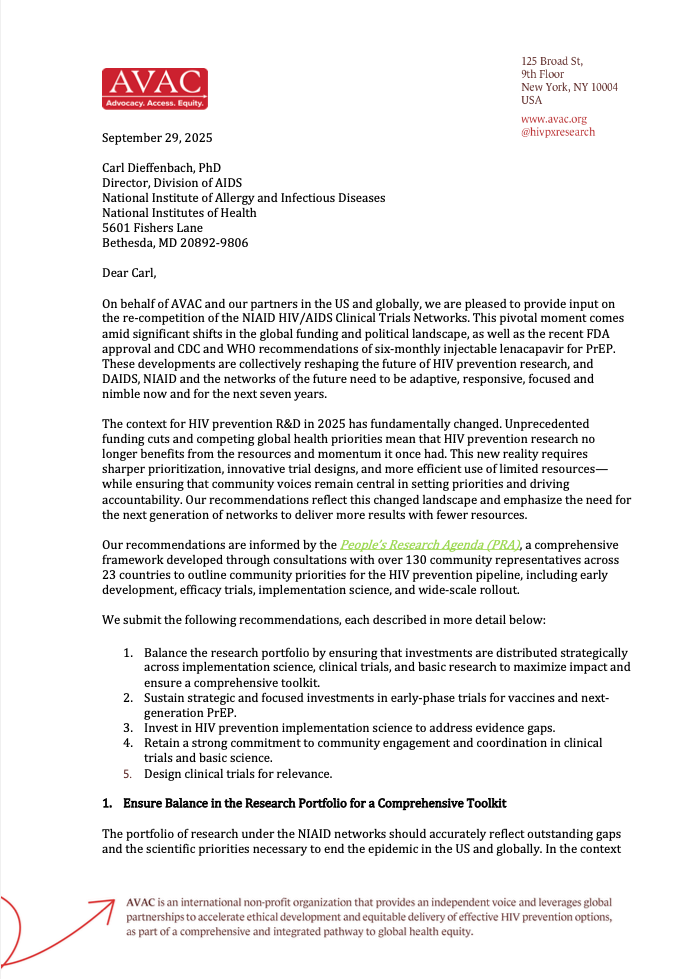 Ending the HIV epidemic is more than just stopping new cases of HIV, it is also about finding strategies for a durable cure for those living with HIV. An HIV cure is one of the ultimate long-term goals of research today.
Ending the HIV epidemic is more than just stopping new cases of HIV, it is also about finding strategies for a durable cure for those living with HIV. An HIV cure is one of the ultimate long-term goals of research today.
Research for an HIV cure is in a robust period of scientific investigation. Several cure strategies are being explored, while understanding of the HIV reservoir and other key scientific concepts are also advancing. This progress in HIV cure research, as part of a pipeline of biomedical tools to help end the epidemic, must be supported and guided by an advocacy agenda that puts communities first.
HIV cure research includes diverse approaches and changing definitions as to the meaning of “cure”. Here are the most recent definitions.
Cure
Cure refers to the complete eradication of replication-competent virus. Current examples of cure all involve stem cell transplants from a donor who has a natural immunity to HIV, however strategies currently being pursued do not involve transplantation.
Cure vs. Remission
Remission is used to describe a person who does not rebound after treatment interruption and available tests indicate no replication-competent virus remains. The Mississippi Child and Boston Patients are examples of individuals who experienced remission. There is no definitive test to confirm if all of replication-competent virus has been eliminated or reduced to a level where rebound will not happen. This question is one of the major challenges the field is investigating.
Viral control
If some very low level of virus is in the body, ideally below the limit of detection by standard tests, but certainly below the level of transmission, the community-preferred terminology is “viral control”. Viral control refers to suppression of the virus while off therapy. These low levels of virus can only be detected by specialized tests.
Access and Cure Research
Transition HIV Cure to the Global South
The design of trials testing cure strategies must prioritize the enrollment of diverse populations— diversity of genders (including men, women, transgender and non binary people) and a mix of populations where different strains of HIV are dominant. In addition to access considerations for trial design, it is likely that some cure strategies will work better for some thean others. An R&D pipeline that includes diverse cure options is a must, to maximize access to options that are effective for everyone. Finally, today, HIV cure research is done at labs with specialized equipment most often found at large research centers in major cities, mostly in the Global North. More needs to be done to develop research capacity near the communities where cure will have the greatest impact, including rural areas, low and middle income countries, and marginalized communities, wherever they are. This is essential to ensure that access to the benefits of cure research is not confined to major cities, rich countries and wealthy communities.
The Cure Research Pipeline
This research is in pre-clinical or small early phase trials, exploring the potential of several approaches based on prompting the immune response. These strategies include: broadly neutralizing antibodies, therapeutic vaccines and biologically engineered T-cells known as CAR T-cells, for chimeric antigen receptor. These are souped-up T-cells that have additional specialized receptors to better target HIV.
Other strategies include agents to wake up HIV that is latent in non-replicating cells (referred to as the HIV viral reservoir). This “kick and kill” strategy would prompt latent HIV to activate so that it could be targeted and neutralized. Another strategy involves gene modification to change human DNA in immune cells to produce cells that are resistant to HIV. Gene modifcation may also be used in a so-called “block and lock” strategy that is looking at how to block the first step in HIV replication.
Cure Advocacy
A knowledgeable and passionate network of HIV advocates with expertise in cure science are vital to the research enterprise and ending the epidemic. With a cadre of advocates engaged in cure research and development, trials can be designed to successfully test strategies that align with community needs, and the fruits of science will be understood and accepted by the communities most affected by HIV.
